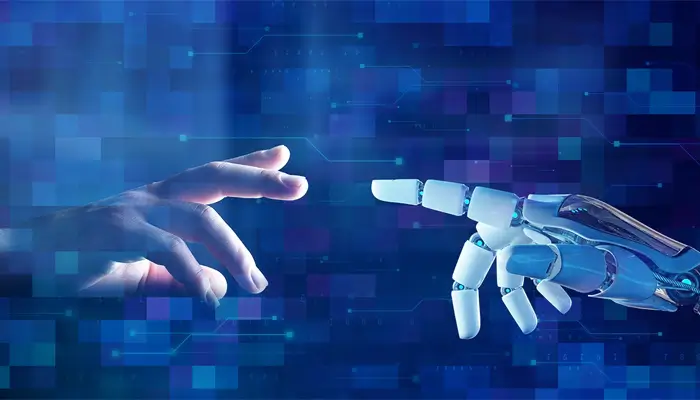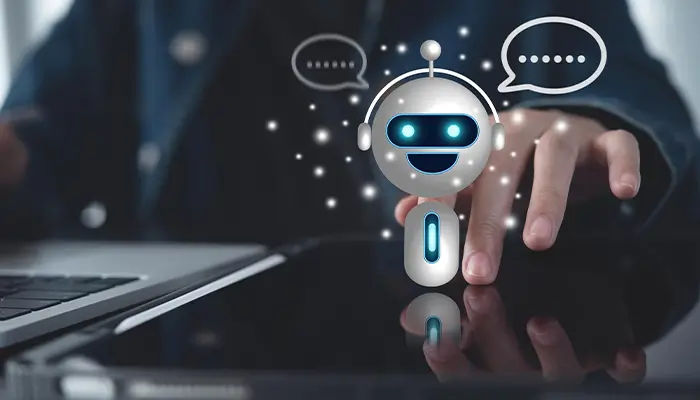
From Wireframes to Websites: Using AI for Faster UI/UX Prototyping
August 6, 2025
The Future of Voice Search: How to Optimize Your Website for SEO in 2025
August 11, 2025Artificial Intelligence is reshaping the creative world. From generating logos to building entire websites, AI tools are giving designers and marketers unprecedented speed and efficiency. But with this power comes responsibility. Questions around copyright, bias originality and authenticity are becoming increasingly important in 2025.
For creatives, embracing AI means learning how to balance innovation with ethical responsibility, ensuring that design work not only looks good but is also fair, transparent and respectful of intellectual property.
The Copyright Challenge
One of the biggest debates around AI in design is ownership. If an AI tool generates a logo, who owns the rights, the user, the tool’s developer or the AI itself?
Platforms like Adobe Firefly and Canva’s AI tools now emphasize using licensed and ethically sourced training data. This ensures that AI-generated content isn’t accidentally copying existing copyrighted material. As a best practice, designers should always:
- Verify licensing terms of AI-generated outputs.
- Use AI as a starting point and add human creativity to finalize designs.
- Clearly disclose when AI tools are used in client projects
Addressing Bias in AI-Generated Design
AI tools learn from massive datasets and those datasets may carry hidden biases. For example, an AI used for marketing visuals might favor certain cultural representations while neglecting others.
To avoid unintentionally promoting stereotypes, designers should:
- Review AI-generated outputs critically.
- Ensure inclusivity by adjusting visuals and copy for diverse audiences.
- Use tools that are transparent about their data sources.
Originality vs. Automation
AI can generate thousands of design variations in seconds. But relying too heavily on automation risks creating generic and uninspired content. To keep originality alive:
- Treat AI output as a draft, not a final product.
- Add custom design elements that reflect brand identity.
- Combine human intuition with AI efficiency for unique outcomes.
Transparency With Clients
Clients value authenticity. If AI is used in the creative process, it’s best to be transparent. Many agencies are now including clauses in contracts that specify where and how AI tools are applied, whether in brainstorming, prototyping or content generation.
Being upfront not only builds trust but also positions the designer as a forward-thinking professional who knows how to leverage technology responsibly.
Practical Steps for Ethical AI Design in 2025
- Use AI tools with ethical data policies (Adobe Firefly, Runway, Figma AI).
- Always cross-check copyright and usage rights.
- Test outputs for accuracy, fairness and inclusivity.
- Maintain a human touch in every final design.
Conclusion
AI has opened new creative possibilities, but ethics must guide its use. By addressing copyright, avoiding bias, ensuring originality and practicing transparency, designers can harness AI without compromising integrity.
In 2025, the most successful creatives will not just use AI to work faster, they will use it to create responsible, inclusive and authentic design experiences.
If you have any questions regarding “Balancing AI in Innovation” feel free to contact us. For inquiries and consultations, call us at: +92 321 4808303 or Email us at: hello@owaisgilani.com.
Disclaimer: The information shared on this website is for educational and informational purposes only and reflects my personal views and experiences. While I strive to provide accurate and helpful content, readers should use their own judgment and consult with a qualified professional before making any decisions based on the information here. I am not responsible for any actions taken based on this content. Feel free to reach out to me if you need clarification or have questions before using any part of this information.



